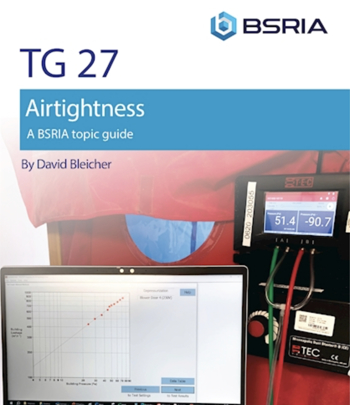Cash flow forecast
Contents |
[edit] Introduction
A cash flow forecast is an important business tool that establishes whether there is enough cash to run a business or to expand it. It will also reveal when more cash is going out of the business, than in.
A cash flow forecast (also called a 'cash flow budget' or 'cash flow projection') helps identify whether a firm needs to borrow, how much, when, and how it will repay the loan.
Building a cash flow forecast allows an evaluation of cash resources that are required and when they are required. Business owners can identify likely future gaps in funding and plan for those gaps accordingly. It is an important tool for predicting the continuing financial health of the business.
Additionally, cash flow models enable business owners to assess 'what if' scenarios by changing key variables to see how vulnerable the business is to price changes, staffing levels, exchange or interest rate movements, and other key drivers.
In larger organisations the cash flow projection can be integrated with day-to-day operations. This can help identify what production is necessary, what resourcing is required and can provide an assessment of the capacity within a business.
[edit] What should be included in a cash flow forecast?
There are three key elements in a cash flow forecast: likely sales, projected payment timings, and projected costs.
[edit] Likely sales
To start, estimate likely sales for the weeks or months covered by the cash flow forecast. The easiest way to do this is to look at sales history from the last few years. Take note of any seasonal patterns, or the impact of promotions in those months.
If it is a new business, then use data from suppliers, industry experts and even competitors to make predictions.
When estimating these sales, it’s important to take any future plans into consideration. Take a look at the current state of the market and any emerging trends, as these may have an impact on the business. Things to consider include any promotional activity or product launches, and the activity of competitors too.
[edit] Projected payment timings
Once the estimated sales are in place, add in when payments are expected to be received. Factor in a delay for most payments.
[edit] Projected costs
Next estimate outgoings. The business will likely have fixed and variable costs, and both will need including.
Fixed costs include things such as rent and salaries. Add these dates and projected amounts, including bills, fees, memberships and tax payments.
Variable costs are the opposite – they’re usually dependent on the sales made. For example, stock or raw materials. In this instance, use likely sales to predict how much these costs will be.
[edit] Related articles on Designing Buildings Wiki
- Balance sheet.
- Budget
- Business case.
- Cash flow.
- Cash flow statement.
- Construction contract.
- Construction organisations and strategy.
- Contingency.
- Cost plans.
- Earned value.
- Fee forecasting.
- Financial hedging.
- Financial management tools.
- Fluctuations.
- Resource forecasting.
- Retention.
- The Late Payment of Commercial Debts Regulations 2013.
- Working capital.
- Whole life costs.
Featured articles and news
The UK's Modern Industrial Strategy: A 10 year plan
Previous consultation criticism, current key elements and general support with some persisting reservations.
Building Safety Regulator reforms
New roles, new staff and a new fast track service pave the way for a single construction regulator.
Architectural Technologist CPDs and Communications
CIAT CPD… and how you can do it!
Cooling centres and cool spaces
Managing extreme heat in cities by directing the public to places for heat stress relief and water sources.
Winter gardens: A brief history and warm variations
Extending the season with glass in different forms and terms.
Restoring Great Yarmouth's Winter Gardens
Transforming one of the least sustainable constructions imaginable.
Construction Skills Mission Board launch sector drive
Newly formed government and industry collaboration set strategy for recruiting an additional 100,000 construction workers a year.
New Architects Code comes into effect in September 2025
ARB Architects Code of Conduct and Practice available with ongoing consultation regarding guidance.
Welsh Skills Body (Medr) launches ambitious plan
The new skills body brings together funding and regulation of tertiary education and research for the devolved nation.
Paul Gandy FCIOB announced as next CIOB President
Former Tilbury Douglas CEO takes helm.
UK Infrastructure: A 10 Year Strategy. In brief with reactions
With the National Infrastructure and Service Transformation Authority (NISTA).
Ebenezer Howard: inventor of the garden city. Book review.
The Grenfell Tower fire, eight years on
A time to pause and reflect as Dubai tower block fire reported just before anniversary.
Airtightness Topic Guide BSRIA TG 27/2025
Explaining the basics of airtightness, what it is, why it's important, when it's required and how it's carried out.
Construction contract awards hit lowest point of 2025
Plummeting for second consecutive month, intensifying concerns for housing and infrastructure goals.
Understanding Mental Health in the Built Environment 2025
Examining the state of mental health in construction, shedding light on levels of stress, anxiety and depression.






















Comments
A cash flow forecast is a financial planning tool that projects the expected inflows and outflows of cash over a specific period, usually on a monthly or quarterly basis. It helps businesses and individuals assess their anticipated cash position and make informed decisions about financial management. Here's how to create a cash flow forecast:
1. **Identify the Time Period**: Determine the period for which you want to create the cash flow forecast. It could be for the next month, quarter, or even the entire year.
2. **Inflows of Cash**: Start by estimating all the sources of cash inflows during the chosen period. Common sources may include sales revenue, accounts receivable collections, loan disbursements, investment income, or any other incoming funds.
3. **Outflows of Cash**: Next, identify all the expected cash outflows. These may include expenses such as salaries, rent, utilities, supplier payments, loan repayments, taxes, and any other regular or one-time expenses.
4. **Account for Timing**: Consider the timing of cash flows, as some may not occur evenly throughout the period. For example, you might receive a large payment at the beginning of the month but have several expenses spread out over the month.
5. **Adjust for Non-Cash Items**: Cash flow forecasts focus on actual cash transactions, so exclude non-cash items like depreciation, which do not involve cash movements.
6. **Account for Seasonal Variations**: If your business experiences seasonal variations in sales or expenses, adjust your forecast accordingly to reflect these fluctuations.
7. **Factor in Contingencies**: Consider any unexpected or one-time cash flows that may occur during the period. This could include unexpected expenses or windfall gains.
8. **Create a Spreadsheet or Use Accounting Software**: Organize your forecast in a spreadsheet or use accounting software that allows you to input and calculate cash inflows and outflows easily.
9. **Monitor and Review**: As the period progresses, track the actual cash flows and compare them with your forecast. Regularly review and update your forecast to account for any changes in circumstances.
10. **Use for Decision-Making**: The cash flow forecast should serve as a valuable tool for financial planning and decision-making. It can help you identify potential cash shortages, plan for necessary borrowing or investments, and make informed choices to improve your financial position.
A well-prepared cash flow forecast provides valuable insights into the financial health of a business or individual, helping to anticipate and manage cash flow fluctuations and maintain a stable financial position. It is especially crucial for businesses to ensure they have sufficient liquidity to meet their financial obligations and seize opportunities for growth.